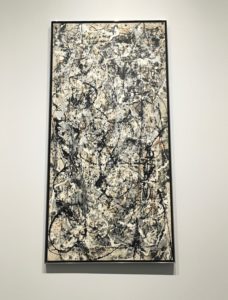When stepping foot into an art museum, most people already have preconceived notions on what they are “allowed” to do and say. Art museums are serious. Art museums are cold. Art museums are only fit for long, contemplative gazes at Renaissance paintings.
The Dallas Museum of Art breaks that traditional mold. Instead, it is a museum for the masses.
Themed museum guides line the shelves; some are for “cat lovers” while others are tailored to the “golden child.” The Center for Creative Connections provides a creative space for those under (and over) the age of 10.
Amid obscure light installations and shoe sculptures in the contemporary gallery, a security guard excitedly tells visitors to look at a sand and glass sculpture on the ground at a particular angle to see an optical illusion. The museum comes alive here: people have fun while learning something new.
Some attendees joke at the art, posing for snapchats. Others ponder more well-known pieces while DMA veterans scour the galleries, Nikon in hand, to show their friend their favorite piece. At the DMA, it feels as if there are no “rules” or specific ways to look at a piece of art.

While unassuming at first, the Dallas Museum of Art’s collection houses works by some of the most famous artists to date. Some highlights include Claude Monet’s “Waterlilies,” multitudes of compositions by Piet Mondrian, and Jackson Pollock’s “Cathedral.” The DMA is also home to Greek and Roman vases and sculptures as well as arts of Asia, Africa and the Americas.
The DMA attracted even more people this past summer with one of its most popular exhibitions: México 1900–1950: Diego Rivera, Frida Kahlo, José Clemente Orozco, and the Avant-Garde. This was the first time the exhibition made its way to the US, containing pieces like Frida Kahlo’s “Las dos Fridas” and Diego Rivera’s “Flower Seller.”
When visiting the Dallas Arts District and all it has to offer, do not miss out on the Dallas Museum of Art, where an art excursion can become a social learning experience.








